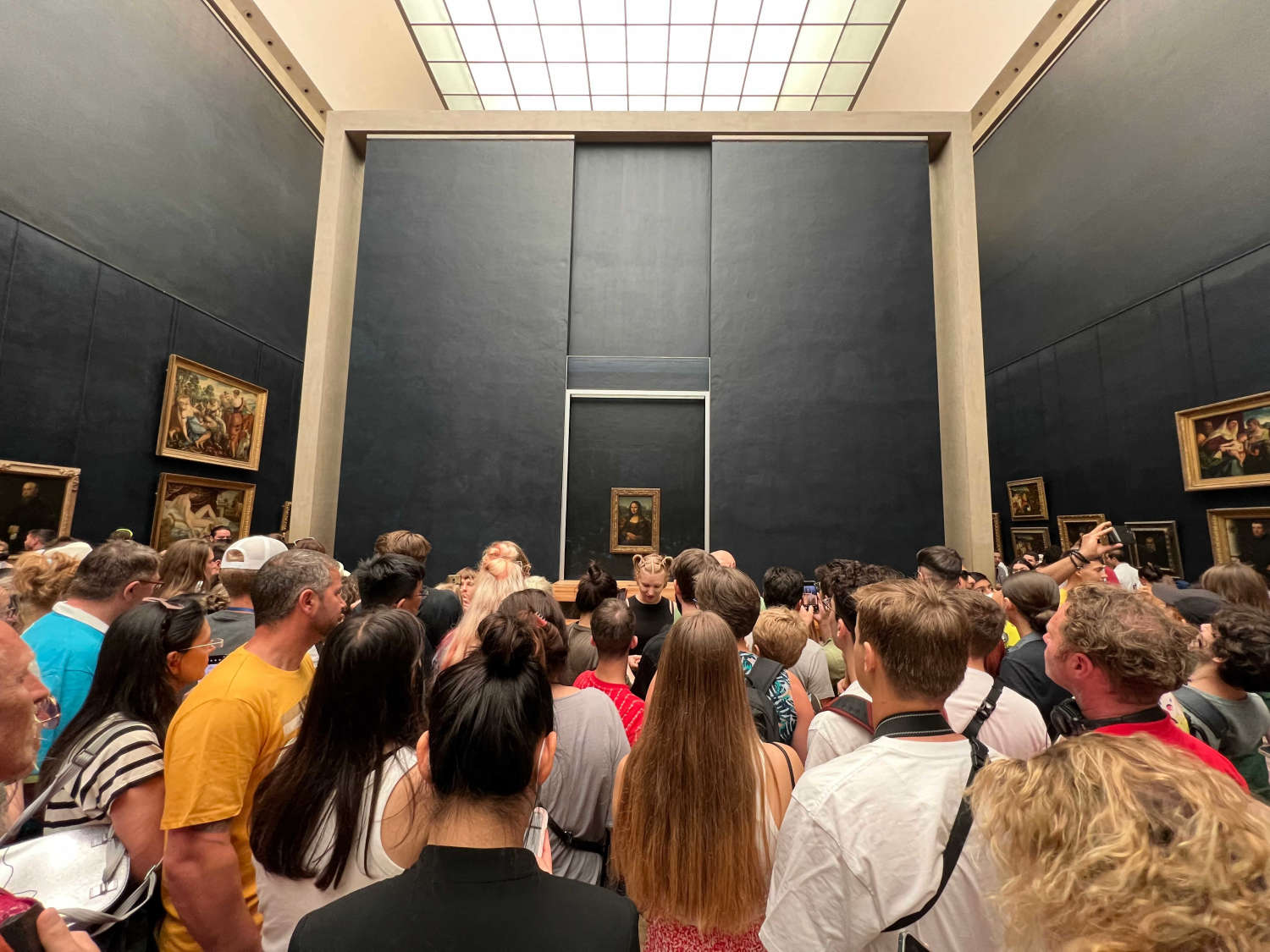While the Louvre attracts art aficionados from around the world who admire the renowned museum for more than the Mona Lisa, the tiny, mighty portrait by Renaissance legend Leonardo da Vinci still dominates the room where it hangs. Of course, there is great reason why the Mona Lisa garners the attention of the Louvre.
Thousansa of tourists, admirers, and art professionals alike huddle around the piece every day to get a glimpse of her enigmatic eyes. In the same room, however, are Venetian masterpieces that could get overlooked. Do yourself a favor, and check out the must-see artistic giants of Venice before you leave the Mona Lisa room. Here’s a lowdown of what to look out for in this remarkable area.
Titian, Tintoretto, & Veronese near the Mona Lisa
1. Wedding Feast at Cana by Veronese
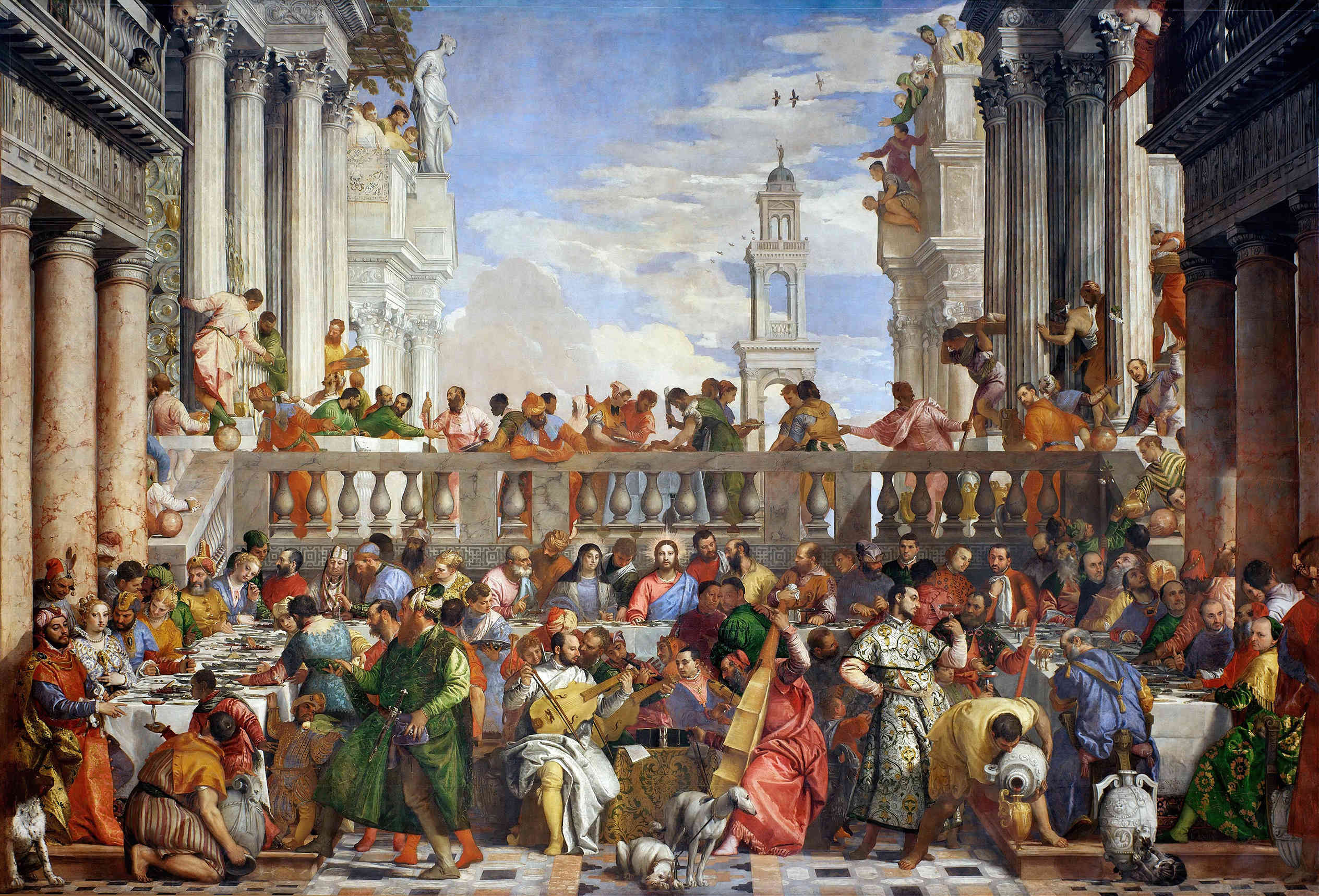
You could stare at the Wedding Feast at Cana for hours and still find something new in it. One of Veronese’s most famous paintings, the Mannerist piece depicts a boisterous wedding party in which Jesus Christ performs his first miracle, turning water into wine. This painting is remarkably expansive, taking up 724 square feet. It’ll be hard to miss right next to the Mona Lisa! What’s also great about this size is that you can observe the fine details more easily — the quirks and characteristics in each of the 130 figures represented in the piece, the asymmetrical composition, the drinking and merriment.
The magnificent work is teeming with juxtaposition. While Renaissance values put an emphasis on the ideal, making a painting harmonious and perfect, Mannerist paintings exaggerated these qualities by taking Renaissance features to their extreme. What might Veronese be telling us in this perfect and imperfect religious painting that illustrates drinking and excess? You can feel contrast everywhere: in the Mannerist style, in the at once religious and sacrilegious subject matter, and even in the old, anachronistic and contemporary garb that the figures wear. There’s much to observe in this gloriously intricate masterpiece!
Fun Fact: During the Renaissance, really shallow goblets—which you can see in Veronese's Wedding at Cana on the tables to the right and to the left—were popular with the upper classes. They’d basically drink out of a plate! The ability to successfully drink from these delicate glasses showed the drinker’s status and elegance.
2. Portrait of a Venetian Woman (La Belle Nani) by Veronese
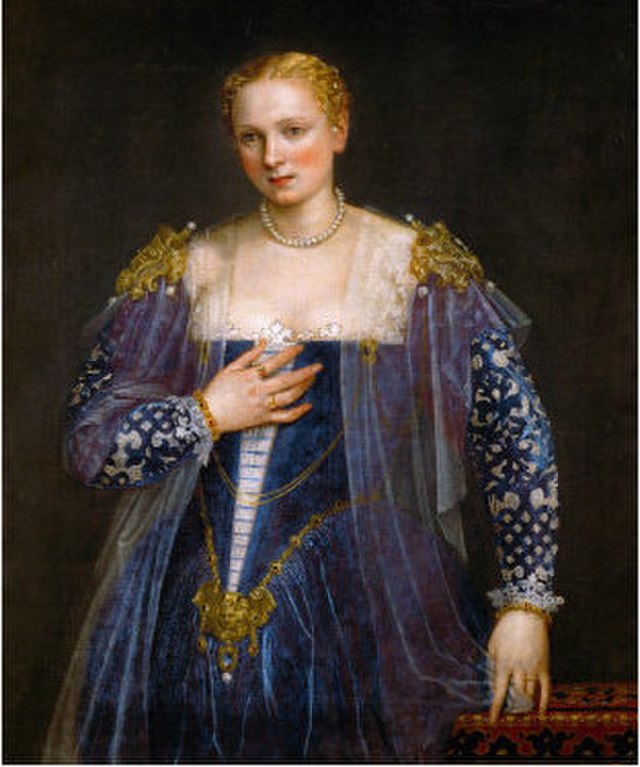
In addition to his large, expressive paintings portraying religious and mythological subjects, Veronese also illustrated portraits of noblewomen. You can find various Veronese Portrait of a Woman pieces at renowned museums around the world, and the one at the Louvre is emblematic of their shared beauty. The well-regarded Venetian artist paints an unknown noblewoman adorned in a lavish blue dress and ornate jewelry, including a ring on her left hand. Veonese expertly shows the status of this woman without compromising her personality. The dark backdrop and dress accentuate a rosy, inquisitive face. We don’t know who this woman is, but, like Titian’s Man with a Glove below, her face gives us all we need to know. Her expression gives us a reserved confidence. Perhaps she was a powerful, intelligent woman with a curious and strategic mind. In any case, Veronese produced a portrayal of Venetian elegance at its finest.
3. Pastoral Concert by Titian
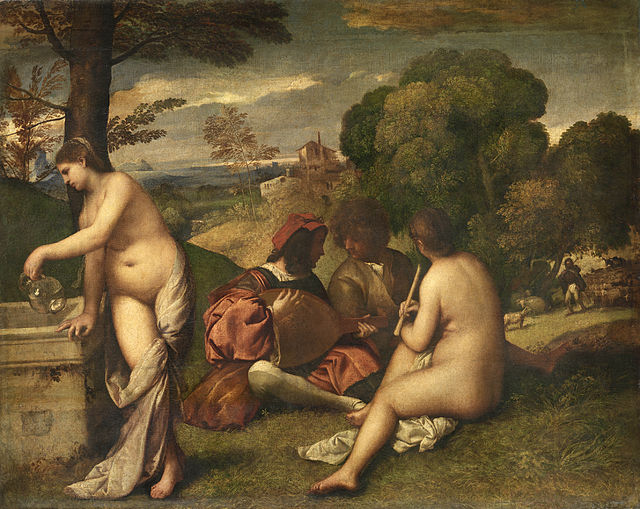
This vivid picture illustrates a group of people on a lawn, some of which are playing music together. The naked two women in the foreground have drapery strewn across their legs, and the men are dressed in Venetian garb true to the time period. Beyond this image, you can enjoy a serene pastoral landscape with greenery, a shepherd, some sheep, and a village scene accompanying the blue foggy horizon.
Looking at this wonderful painting, you might be overcome with a sense of dreamlike whimsy, a poetic feeling of lush green tranquility. True for all art, there are a couple different interpretations of this piece. Our favorite, because it reveres the very pursuit of artistic endeavors, is that the composition might be a representation of poetry and music. The women could be serving as a muse, or could be a fantasy that the musicians conjured as they sing and create. The pastoral backdrop is the perfect setting to carry this imaginary poetic vision, providing a surreal yet stable quality to the musicians’ creativity. Pastoral Concert was a genre-defining art piece as well — in 1754, Nicolas Bernard Lépicié coined the term “pastoral” as a genre for landscape art, humanist values in art, and the appreciation of poetry, music, or other artforms in paintings based on Titian’s masterpiece.
4. Man with a Glove by Titian
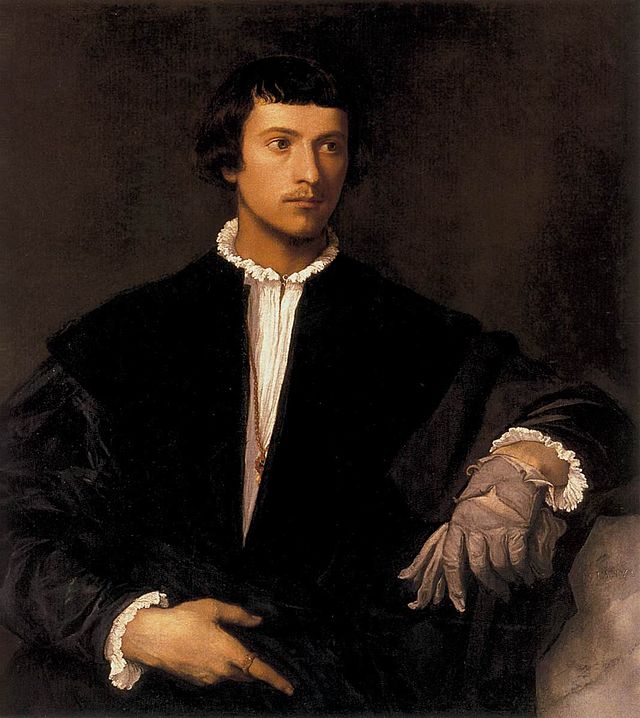
Titian was highly esteemed for his very versatile works of art. He flourished in all subjects, be they portraits, landscapes, religious, or mythological pieces. This portrait depicts a young man against a dark background looking off in the distance, a single glove adorned on his left hand. With his black jacket, white shirt, various items of jewelry, and gloves, he is dressed fashionably for the time. Like Portrait of a Venetian Woman by Veronese, it’s pretty clear that this refined gentleman is wealthy.
While we don’t know for certain who this young man is, we can say with more confidence what kind of person he was. Titian’s controlled hand illuminates the boy’s personality, his character subtly conveyed. The black background, also seen in Veronese’s portrait, does a good job of letting us focus on the most important attributes of the piece.
What demeanor do you see? The relaxed composure and elegant posture perhaps shows a level of refinement that this person is used to. His high fashion adds to this. Although he clearly looks wealthy, his expression also gives us sensitivity. The boy’s gaze is almost full of question, an inquisitiveness. Titian’s genius here depended on his ability to depict who his subject is without weighing him down in ornamentation. No, this artist relied completely on expression and posture to give us a sense of who he is.
5. The Coronation of the Virgin (or Paradise) by Tintoretto
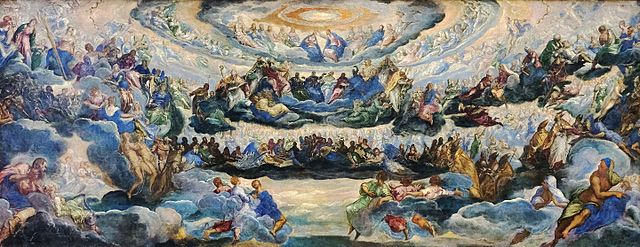
There have been many painters throughout the course of history that have been inspired to visually construct the story of the coronation of the Virgin, but few others are as grand, celestial, and holy. Created by the other Venetian Renaissance giant, Tintoretto, the Coronation of the Virgin (also known as Paradise) paints a vivid picture of the Virgin Mary being crowned as a queen in heaven by Jesus after her death. Clouds part and heavenly bodies celebrate in an ascension that ends with the grand event at the very top. The intense colors, swirling movements, and sparks of light make this piece a real treat for your eyes to feast upon. Holy, transcendent, and stellar, Tintoretto does exactly what he aims to in leaving us with a sense of awe.
We love the Mona Lisa, but the works of Veronese, Titian, and Tintoretto are worthy adversaries. Hopefully, this blog inspires you to check out some of the other underrated pieces that live in the same room as Leonardo da Vinci’s renowned work of art.
If you’re interested in more mythological figures of Venetian art, or the works of Veronese, Titian, and Tintoretto, we’ve got some amazing art seminars and courses coming up with Dr. Susan Steer, an expert with a background in art and Venice.
Visiting the Louvre in Paris #withContext
With Context, there’s a variety of ways that you can visit the Louvre that fit the experience you want. Take our online seminars on the Louvre and come away with a deeper appreciation for the many artifacts in the world famous museum that go beyond the surface. For an on-the-ground experience, join us in the museum on an immersive tour and marvel at the wonderful masterpieces yourself... or with your kids!
For those of you who love art, history, and museums around the world, we’ve got plenty of online learning for you.
